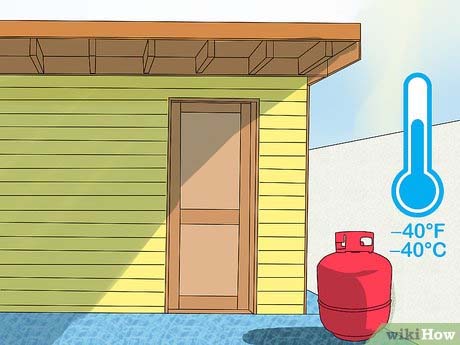How to store LPG Cylinders
If you work with gas, you know that there are some precautions to take when storing your cylinders. We recommend that you apply the following rules.
How do I store full gas cylinders?
Gas cylinders should always be stored in an upright position, without their regulators and on a stable support. This will prevent the gas from escaping in liquid form, thus avoiding the risk of fire.
There are a few important rules to take into account when handling and storing your cylinders:
Anyone handling or using gas must be specially trained and wear safety shoes and handling gloves.
Use a bottle trolley, and if this is not possible, roll the bottle while holding it by the cap.
Secure the bottles at the top to prevent them from falling. Never hold a falling bottle in place.
Preferably, transport acetylene and liquefied gas bottles (propane, carbon dioxide, etc.) in an upright position.
Protect your bottles as much as possible from the sun’s rays.
Keep the bottles away from contact with oils and fats.
Store your bottles vertically and fastened, preferably outdoors, or at least in a well-ventilated room provided for this purpose.
In case of indoor storage, the electrical installation, and in particular the lighting must be adapted to the nature of the gases.
For cylinders that will be stored for a long time, when it is time to use them, you will need to wipe the valve outlet with a clean cloth, and purge the valve outlet channel to remove dust.
Storing empty or out of order gas cylinders
Be aware that a gas cylinder may look empty, but may not be completely empty. That is why the storage of empty cylinders must be well respected.
When a cylinder appears to be empty, be sure to take the same safety precautions as when it is full.
Mark your bottles; store them separately from new ones. Check that the valve is closed. Your empty cylinders should then be returned to your supplier.
Do not hesitate to ask us if you have any doubts. One of our experts will answer your questions and explain the procedure to follow.
Storing propane tanks outdoors is perfectly safe, but it's best to choose a spot that's away from your home. When storing your propane tanks in the winter, it's important to know that freezing temperatures aren't a problem for propane—in fact, you don’t even need to cover your tank when storing it outdoors in the winter.
Place the tank on a sturdy surface, like a piece of wood or slab of concrete, and store it uncovered or covered.
Storing propane tanks outdoors is perfectly safe, but it's best to choose a spot that's away from your home. When storing your propane tanks in the winter, it's important to know that freezing temperatures aren't a problem for propane—in fact, you don’t even need to cover your tank when storing it outdoors in the winter.
Place the tank on a sturdy surface, like a piece of wood or slab of concrete, and store it uncovered or covered.
Storing propane tanks in the summer is easy, too. In warm weather your propane tank can still be stored outdoors on a flat, solid surface. You'll want to keep the tank in a shaded area so that it's not in direct sunlight for long periods of time—this will keep the tank at a safe temperature, note exceeding 120 °F (49 °C).


